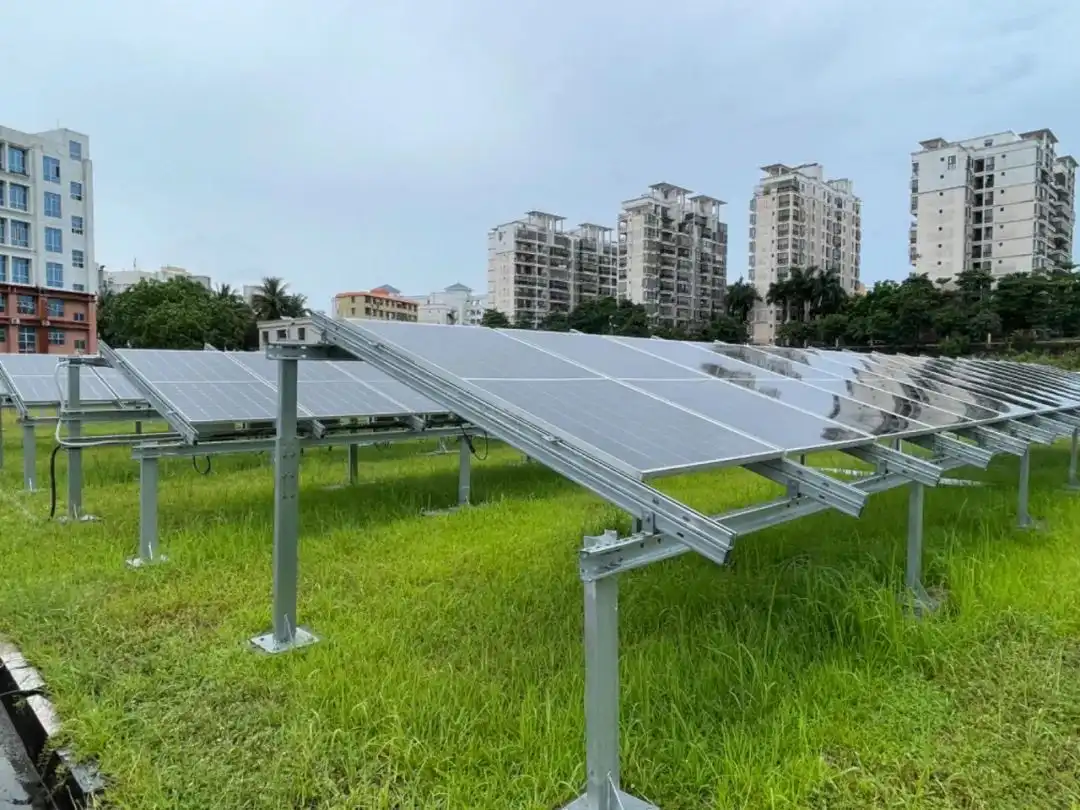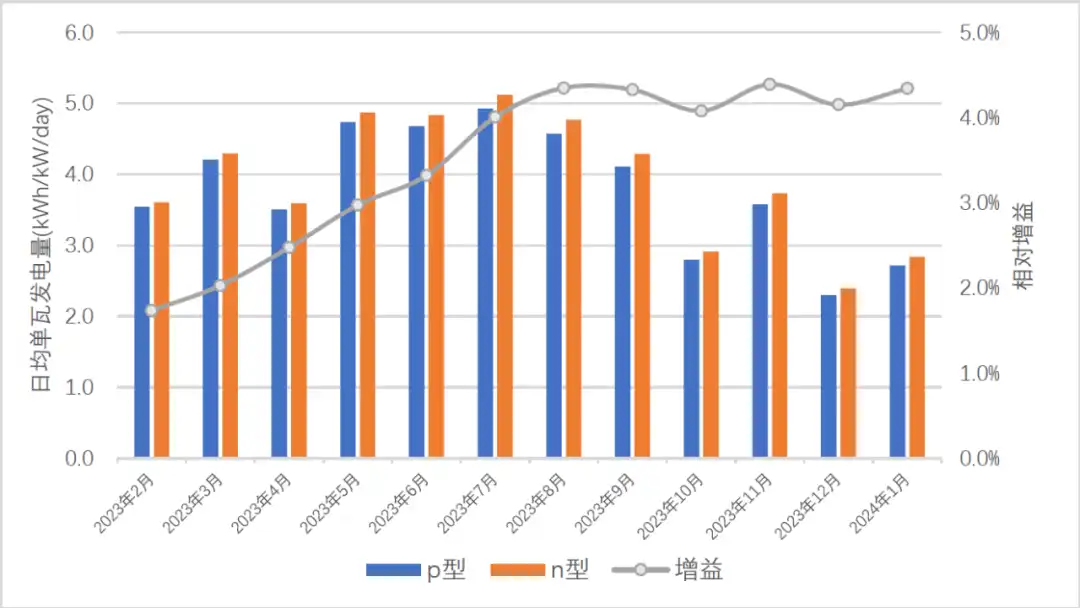Research on the power generation gain of Jing'ao Technology's n-type double-sided photovoltaic modules in Hainan's humid and humid environment
A full one-year empirical results show that under the humid and humid conditions in Hainan, the power generation gain of Jing'ao Technology's n-type double-sided photovoltaic modules compared with p-type double-sided modules reaches about 3.5%.
project background
N-type photovoltaic modules have gradually become mainstream due to many advantages such as high power, high efficiency, high power generation capacity and high reliability. The outdoor performance of the modules in various environments is particularly important. In order to verify the actual outdoor power generation performance of different technical components, JA Technology has successively cooperated with third-party authoritative organizations to conduct empirical monitoring on the power generation performance of n-type modules. This empirical project is an empirical comparison conducted by JA Technology's n-type components in conjunction with TÜV Rheinland in the hot and humid environment of Qionghai, Hainan, after achieving excellent performance in Yinchuan, a dry and hot environment. In order to ensure that the data is more accurate and reliable, the project adopts the same installation method and system configuration for all types of components. At the same time, in order to ensure that power generation data in different seasons is more complete, the project collects a complete one-year period from February 2023 to January 2024. Analysis of empirical data for cycles.
project overview
The demonstration power station is located in the national-level outdoor demonstration base for photovoltaic products in Qionghai City, Hainan Province. This area has a tropical monsoon climate, with an average annual temperature of about 24 degrees Celsius and an average annual precipitation of about 2100 mm. It is a typical high-temperature and humid environment, with an average annual peak hours of about 1550 kilowatt-hours/square meter (water level) and an average annual sunshine hours of about 2155 hours. The empirical projects are shown in Figure 1.

Figure 1 Jingao and TÜV Rheinland Hainan Demonstration Project
The demonstration power station has installed DeepBlue 4.0 series n-type double-sided modules (based on Jing-A n-type passivated contact technology Bysium + batteries, hereinafter referred to as "n-type modules") and p-type PERC double-sided modules (hereinafter referred to as "p-type modules"). Each module has an installed capacity of about 5 kilowatts (measured power in the demonstration field laboratory), and is connected to a 6-kilowatt series inverter respectively. The project adopts a fixed bracket installation method (inclination angle of 19°), and the long frame of the component is fixed on the vertical purline to ensure that the back of the component is unobstructed. The height of the component is about 1 meter above the ground. In addition to station-level environmental monitoring stations, the site is also equipped with high-precision DC meters, component-level temperature sensors, high-precision irradiance meters and other monitoring equipment.
In terms of system design and component power generation performance analysis, in order to eliminate the impact of inverters on the power generation performance of different types of components and ensure more accurate data, DC meter data is directly used and normalized.
Comparison of power generation performance
During the operation of the empirical power station from February 2023 to January 2024, the overall power generation of n-type modules and p-type modules is shown in Table 1, and the comparison of power generation per watt and gain of the two types of modules is shown in Figure 2.
Table 1 Comparison of empirical module power generation

The power generation capacity of photovoltaic modules mainly depends on characteristics such as power attenuation performance, high temperature power generation performance, double-sided power generation performance, and low irradiation power generation performance. In this empirical test, the n-type module and the p-type module adopt the same module packaging form (half cell, double glass structure), and the difference in power generation performance mainly comes from different battery technologies.

Figure 2 Comparative data of power generation per watt between n-type module and p-type module
summary
The results of this year-long Hainan Qionghai Demonstration Base show that the power generation per watt of Jing'ao n-type modules is about 3.5% higher than that of p-type modules, which strongly proves that Jing'ao DeepBlue 4.0 series photovoltaic modules are in practice. Excellent power generation performance during operation. Subsequently, JA Technology will carry out more detailed empirical project research on different regions, different forms, different technical routes and different environmental conditions based on the future development and application direction of photovoltaic technology, in order to ensure the long-term safety of JA Technology's products. Stable and reliable bring higher value to global customers.
source : JA Solar
edit:Kong Kexing
proofreading:han Yi
